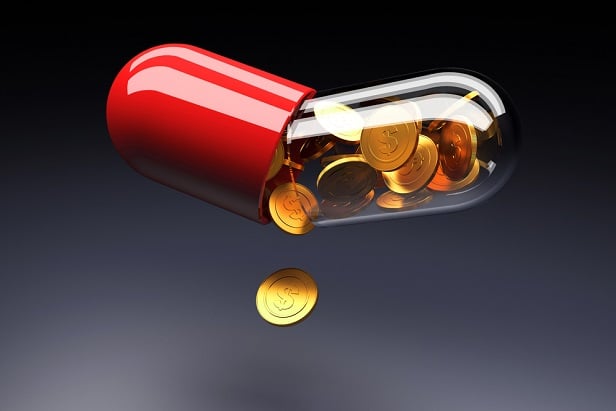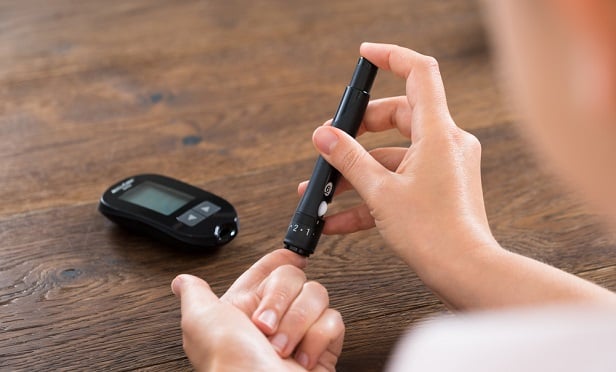 PhRMA, the trade association forthe U.S.'s top drug makers, spent more than $6 million to lobbyCongress and the Trump administration in the fourth quarter,(Photo: Shutterstock)
PhRMA, the trade association forthe U.S.'s top drug makers, spent more than $6 million to lobbyCongress and the Trump administration in the fourth quarter,(Photo: Shutterstock)
The pharmaceutical industry's leading trade group disclosed Tuesday that ithad spent a record $27.5 million on lobbying in 2018, $1.4 millionmore than in 2009, when Congress and the White House created theAffordable Care Act, the health-care overhaulbetter known as Obamacare.
|The surge in spending by the PharmaceuticalResearch and Manufacturers of America came as the industry failedto win a last-minute legislative fix that would have reduced itsshare of outlays in a popular Medicare program, and as it preparedfor what could be its most challenging year in decades.
|Related: Drugmakers vs. Trump: What's next for theshowdown?
|PhRMA, the trade association for the U.S.'s top drug makers,spent more than $6 million to lobby Congress and the Trumpadministration in the fourth quarter, according to disclosuresfiled with the Senate Office of Public Records. Its biggest-everquarter came in the first three months of 2018, when it reportedspending nearly $10 million. A spokeswoman for the group declinedto comment.
|High drug costs
One of the few issues that unites President Donald Trump and theDemocrats newly in charge of the U.S. House of Representatives isreducing the price of prescription medicine. Both sides will belooking for accomplishments to tout at a time when thepharmaceutical industry has become a target of public ire.
|The filings cover the period when the midterm elections werebeing held to determine control of Congress. Drug costs were amongthe leading campaign issues in many House and Senate races.
|Lobbying spending for a handful of pharmaceutical companies alsoincreased in the fourth quarter. Among them: Abbott Laboratories,which spent $1.4 million; Johnson & Johnson Services Inc.,which spent $2.3 million. AstraZeneca Pharmaceuticals LP,Boehringer Ingelheim Pharmaceuticals Inc. and Teva PharmaceuticalIndustries Ltd. also saw increased spending in the quarter. Manydrug makers, which must report before midnight Wednesday, have yetto file.
|Third-party negotiation
The Trump administration has proposed plans to increasethird-party negotiation of some drugs in Medicare, the healthprogram for the elderly and disabled. It also wants to benchmarkwhat Medicare pays for drugs to the prices that other developedcountries pay. In Europe, for example, prices are typically lowerbecause they are set by the government.
|House Democrats, meanwhile, have begun an investigation intoindustry pricing practices. The Oversight and Reform Committee sentrequests for detailed information on pricing practices to a dozencompanies, including Pfizer Inc., Amgen Inc, and AstraZeneca.
|Representative Elijah Cummings of Maryland, the committeechairman, said one of the goals is to determine “what steps can betaken to reduce prescription drug prices.” Trump's point person onthe issue, Health and Human Services Secretary Alex Azar, tweeted aphoto of himself with Cummings two days after the House inquirybegan, saying he appreciated the commitment to lowering prices.
|In the Senate, Chuck Grassley of Iowa, the chairman of theFinance Committee, said Tuesday that he planned to hold hearings ondrug prices, beginning on Jan. 29.
|Failed effort
The industry's new challenges follow a failed effort to includein the year-end spending bill a provision that would have given itrelief from large discounts it's required to offer to somebeneficiaries of Medicare Part D, which covers prescription drugs.Trump's decision to shut down part of the government and theensuing standoff with Congress made the effort moot.
|The industry sought to undo legislation, which Congress passednearly a year ago, requiring drug makers to give 70 percentdiscounts, up from 50 percent, to Medicare beneficiaries who exceeda $3,750 annual cap on out-of-pocket drug costs.
|Once beneficiaries exceed $5,000 in out-of-pocket expenses,including the discounts pharmaceutical firms offer, Medicare startspicking up the tab again. The gap in coverage is known as thedoughnut hole.
|The inability to roll back the discount will cost drug makers asmuch as $1.9 billion in 2019, according to one estimate.
|Copyright 2019 Bloomberg. All rightsreserved. This material may not be published, broadcast, rewritten,or redistributed.
Complete your profile to continue reading and get FREE access to BenefitsPRO, part of your ALM digital membership.
Your access to unlimited BenefitsPRO content isn’t changing.
Once you are an ALM digital member, you’ll receive:
- Critical BenefitsPRO information including cutting edge post-reform success strategies, access to educational webcasts and videos, resources from industry leaders, and informative Newsletters.
- Exclusive discounts on ALM, BenefitsPRO magazine and BenefitsPRO.com events
- Access to other award-winning ALM websites including ThinkAdvisor.com and Law.com
Already have an account? Sign In
© 2024 ALM Global, LLC, All Rights Reserved. Request academic re-use from www.copyright.com. All other uses, submit a request to [email protected]. For more information visit Asset & Logo Licensing.








